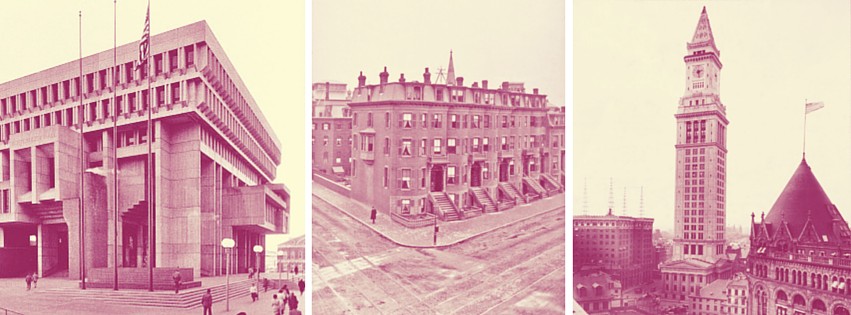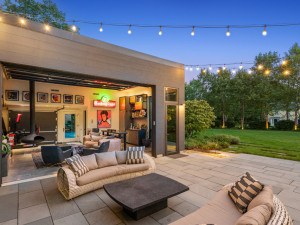15 Ways to Celebrate Preservation Month in Boston

Photos courtesy of Boston Landmarks Commission and the Boston Public Library
The entire month of May is dedicated to historic preservation, and in Boston, we have a lot to celebrate. National Historic Preservation month sets out to promote heritage tourism and to raise awareness about the power of historic preservation. The Boston Landmarks Commission has planned events for every day this month so you can become one with Boston’s historic buildings, neighborhoods, and architecture.
Plus, the BLC is celebrating its 40th anniversary this year. It oversees more than 8,000 properties within the city’s nine historic districts. They’ve deemed this year’s theme as “Preservation Is _______,” left purposefully open-ended to invite citizens to reflect on what preservation means to them. Here are some highlights from their event calendar.
Preservation Is All The Buzz: Preservation Month Keynote Event
Boston’s love affair with alcohol began in its earliest days, beginning with talks of revolution in colonial taverns. The city eventually became home to the country’s first sports bar, and during the Prohibition era, speakeasies were widespread. Local author and journalist Stephanie Schorow chronicles the role of bar culture in Boston’s social and political life in her book Drinking Boston: A History of the City and Its Spirits, and will be speaking about Boston’s historic watering holes and those who frequented them at the Bell in Hand Tavern.
Free, pre-registration required. Thursday, May 7, 6-7:30 p.m., Bell in Hand Tavern, 45 Union St., blckeynote.eventbrite.com.
Preservation Is U: Special Midday Tour Series
Boston is rich in both history and knowledge, so it makes sense that many of Boston’s architecturally significant properties are owned by colleges. Boston University, Emerson College, Northeastern University, and Suffolk University have converted buildings with distinguished designs, from Gothic to Art Deco, into academic spaces.
“In some ways, it’s an introduction to the styles that are out there,” says the director of the BLC’s Design Review, William Young. “Just about every period of the city’s historical architecture is reflected.”
A series of lunch-hour walks will explore these buildings, acting as informal graduate courses in Boston’s college architecture takeover.
Free, reservation required, every Tuesday in May, 12 p.m. May 5, Downtown Boston. May 12, Beacon Hill. May 19, South End. May 26, Bay State Road.
Preservation Is Railways and Reservoirs
Cleveland Circle is smack dab in the middle of two historic areas that tell the story of Boston’s turn of the 20th century expansion. The Aberdeen district was transformed by the electric streetcar and the Chestnut Hill Reservoir and Waterworks Complex brought clean water to the booming city. The Railways and Reservoirs tour highlights the significance of these sites in the city’s history and their meanings today.
Free, Monday, May 4, 5:30 p.m., meeting place confirmed at time of reservation, contact erin.dohrety@boston.gov.
All Saints, Ashmont, Restoration Tour
All Saints’ Church in Peabody Square is finally finished after four years of planning and 20 months of construction. The church that influenced the American Gothic revival style is open for a post-restoration tour.
Free, Saturday, May 9, 11 a.m., Parish of All Saints, 209 Ashmont St., Dorchester, allsaints.net.
Boston Light: Preserving an American Lighthouse
Boston Harbor has seen much history unfold over the years. In 1716, Boston Light was established to aid in maritime navigation. Today, Dr. Sally Snowman takes care of the place— she’s the last U.S. Coast Guard lighthouse keeper in the country. The Boston Light presentation will discuss the lighthouse’s past, present, and future.
Free, Monday, May 11, 6 p.m., Mariners House, 11 North Square, uscgaux.info.
Heart of the Home: Family Life in Downtown Boston: Otis House
The Heart of the Home series highlights family and home life for the wealthy in Boston at the turn of the 19th century. It’s put on by the Boston House Museum Alliance, which includes the Nichols House, the Prescott House, the Gibson House, the Otis House, and the Paul Revere House. The Otis House tour zeroes in on how the Otis children spent their time, explaining children’s education, activities, and duties.
$5, Saturday, May 16, 12 p.m., 1:30 p.m., 3:30 p.m., Otis House, 141 Cambridge St., historicnewengland.org.
Annual Summer Kitchen Opening
The Loring-Greenough House is a Georgian mansion that was saved from destruction in 1924. It has the only remaining intact summer kitchen in Boston, which will open once again this year for tours. The exhibit dates back to 1811, and its laundry room includes a preserved Victorian drying rack.
Free, Saturday, May 16, 5 p.m., Loring-Greenough House, 12 South St., Jamaica Plain, loring-greenough.org.
Down the Aisle: Retrieving and Restoring Period Carpeting at the Trinity Church
The same designer who created Trinity Church’s stained glass windows also created the church’s carpeting. Sarah Wyman Whitman’s designs from the late 1800s were lost until recently, when textile expert John Burrows recreated her carpet designs from preserved scraps. Burrows will give a lecture on the restoration process, and you’ll be able to see his creation, which was installed in 2013.
Free, Sunday, May 17, 1 p.m., Trinity Church, Ferris Room, 206 Clarendon St., burrows.com.
Preservation Is Not What You Think It Is
What happens when someone wants to build in a historic district? A neighborhood’s historic commission has design standards that help with new construction, and the South End is the perfect case study for the process. The South End contains the country’s largest Victorian Rowhouse District, but it used to have several vacant lots and parking lots in the same area. The tour will explain how new projects, like housing and theaters, were commissioned in the historic neighborhood.
Free, Monday, May 18, 5:30 p.m., meeting place confirmed at time of reservation, contact meghan.hanrahan@boston.gov.
Preservation Is Always In Style
Shops, galleries, and restaurants line Newbury Street, but the stylish avenue wasn’t always that way. The tour explores Newbury Street’s residential past and explains how it came to be the fashionable destination that it is today.
“Many people don’t see the buildings as being much more than containers for the businesses that occupy them,” says Young. “But in fact, Newbury Street had a pretty rich history before any commerce existed there at all.”
Free, Tuesday, May 19, 5:30 p.m., meeting place confirmed at time of reservation, contact william.young@boston.gov.
Roslindale Substation Hard Hat Tour
The Roslindale Substation has been vacant for more than 40 years, but now it’s being converted into a restaurant. The building was constructed in 1911 for the Boston Elevated Railway Company in the Neo-Classical Revival style and provided electricity for local trolley cars. The Peregrine Group, Historic Boston, and Roslindale Main Streets will offer a hard hat tour of the building while it’s under construction.
Free, Wednesday, May 20, 3 p.m., Roslindale Substation, 4228 Washington St., Roslindale.
Old North Speaker Series: Robert Allison: How Did Old North Become Old North?
The Old North church, actually called Christ Church, has seemingly always been referred to as “Old North”. But when it was built in 1723, there was already a meeting house that people referred to as “Old North”. This talk by Suffolk’s History Department Chair Robert Allison will chronicle the Old North church’s place in Boston history and explain exactly how it became old and north.
Free, Wednesday, May 20, 6:30 p.m., Old North Church, 193 Salem St., register at eventbrite.com.
Preservation Is Rich and Strange
The Ayer mansion on Comm. Ave. is unlike other Boston homes built at the turn of the century. In her book, Arts and Crafts Architecture: History and Heritage in New England, Maureen Meister cites reasons as to why the house isn’t like its Gothic and Colonial Revival neighbors. (Hint: A non-Bostonian designer with eccentric taste may have played a role.) Her talk will recognize the unique stylistic direction of the mansion.
Free, Tuesday, May 26, 6:30 p.m., Bayridge Residence & Cultural Center, the Ayer Mansion, 395 Commonwealth Ave, contact ayermansion@gmail.com to reserve a place.
Preservation Is Industrial Strength
The hip lofts and warehouse offices of Fort Point began as creations of one single architect: Morton D. Safford. He designed buildings for the Boston Wharf Company, which developed most of the Fort Point Channel area. The tour of Boston’s largest collection of industrial loft buildings will show how Safford adjusted to architectural trends over time and compare his work to a few other surviving buildings of different styles in the district.
Free, Wednesday, May 27, 5:30 p.m., meeting place confirmed at time of reservation, contact erin.doherty@boston.gov.
Boxes Within Boxes: Caring for Historic Structures and Collections
Calling all antique collectors! After a tour of the Loring-Greenough House, join preservation specialists to learn how to improve the preservation of your structures and collections. Participants are encouraged to bring transportable items for the discussion.
$145, $125 for early bird registration, Friday, May 29, 9 a.m. to 4 p.m., Loring-Greenough House, 12 South St., Jamaica Plain, contact fharrell@nedcc.org.
Preservation Month also offers numerous recurring events, including walking tours of almost every neighborhood of Boston, as well as architecture cruises. More information is available at cityofboston.gov/landmarks.


